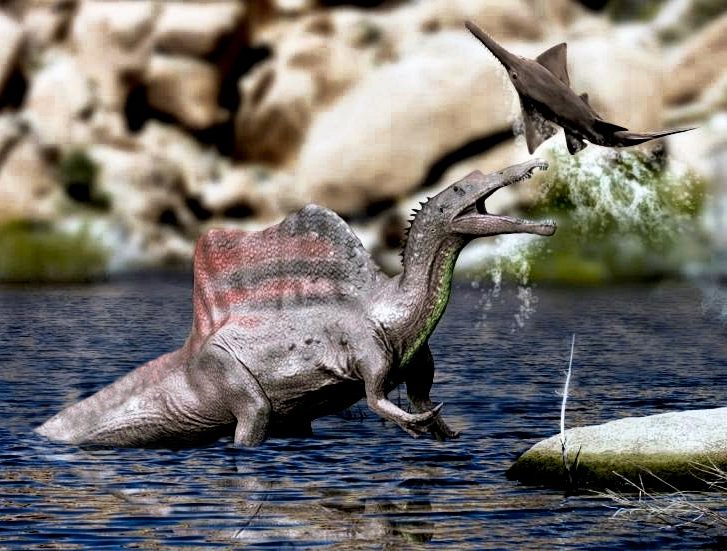When we envision dinosaurs, our mental images often draw from popular media like Jurassic Park or traditional museum displays, showing creatures with scaly skin similar to modern reptiles. However, paleontological discoveries over the past few decades have dramatically transformed our understanding of how dinosaurs actually looked. Far from being simply scaly beasts, evidence suggests many dinosaur species may have sported filamentous structures including proto-feathers, bristles, and potentially even whisker-like sensory appendages. These revelations have opened fascinating new questions about dinosaur appearance, behavior, and evolutionary connections to modern birds. This article explores the current scientific understanding of dinosaur integumentary structures, examining whether these magnificent prehistoric creatures might have been adorned with whiskers, bristles, or quill-like features.
The Evolution of Dinosaur Imagery
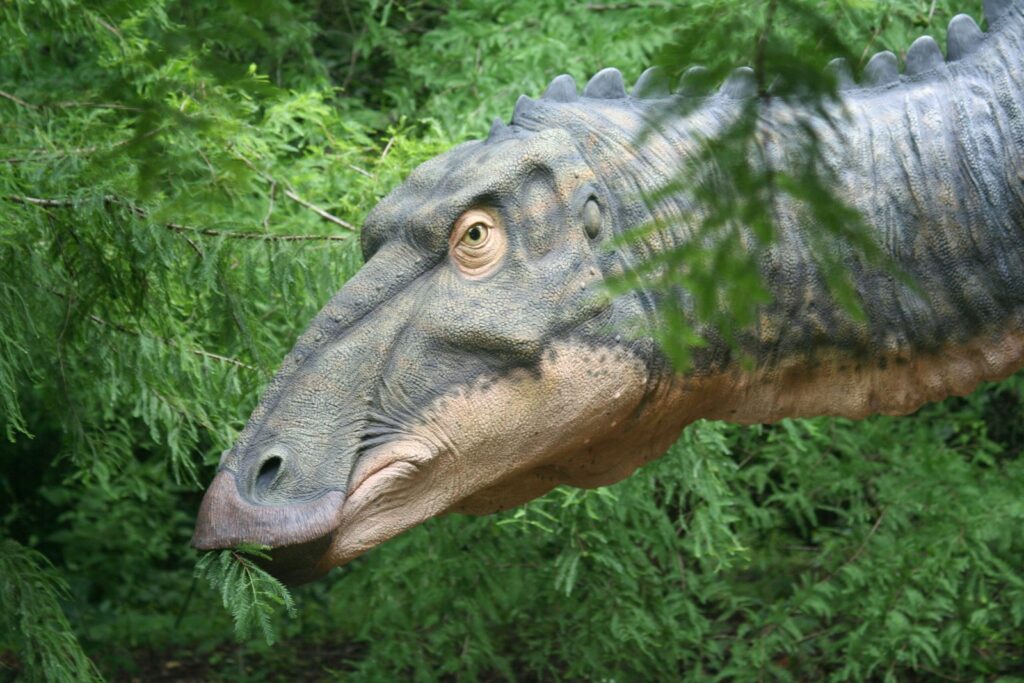
Our perception of how dinosaurs looked has undergone several revolutionary changes since the first dinosaur fossils were scientifically described in the 19th century. Early paleontologists initially envisioned dinosaurs as slow, lumbering reptiles with smooth, lizard-like skin. By the mid-20th century, this changed to more active, dynamic animals, but still primarily scaly in appearance. The 1990s marked a pivotal shift when fossil discoveries from China revealed clear evidence of feathered dinosaurs, particularly among theropods—the group that includes Velociraptors and the ancestors of modern birds. This discovery fundamentally altered scientific understanding, suggesting that many dinosaur species likely possessed various filamentous body coverings rather than exclusively scaly skin. Today’s scientifically accurate dinosaur reconstructions often include feathers, quills, or bristle-like structures, representing one of the most significant revisions in paleontological visualization in scientific history.
The Fossil Evidence for Filamentous Structures
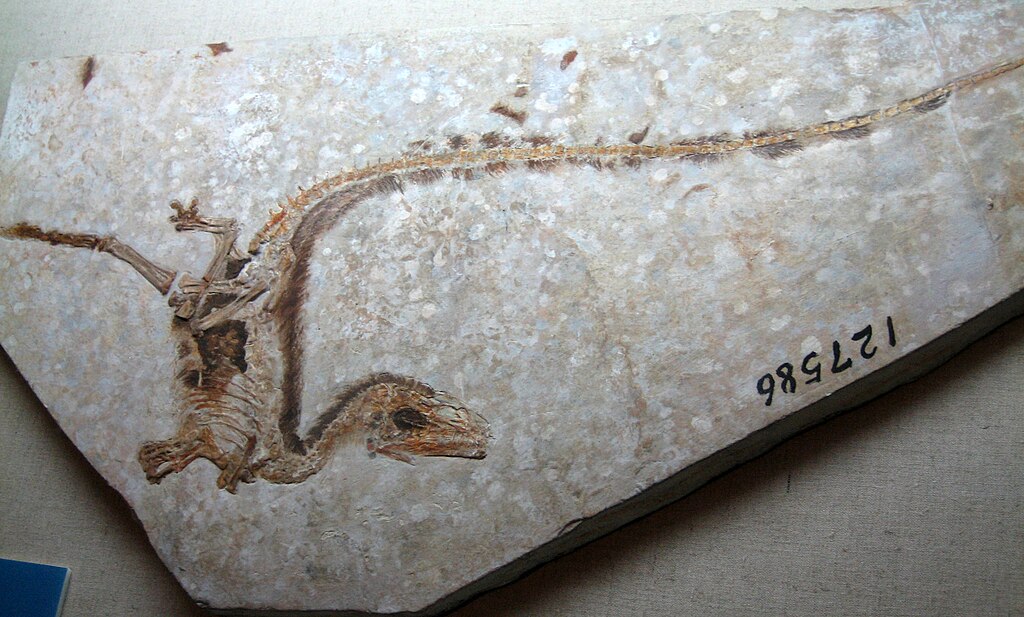
The preservation of soft tissues like skin impressions, feathers, or bristles requires exceptional fossilization conditions, making such evidence relatively rare but increasingly documented. The Yixian Formation in Liaoning Province, China, has yielded some of the most remarkable fossils showing preserved filamentous structures on dinosaur bodies. Species like Sinosauropteryx, a small theropod dinosaur, clearly show primitive feather-like structures preserved as carbonized impressions around the fossil. Similar evidence has been found for numerous other theropod dinosaurs, with structures ranging from simple filaments to complex, branched proto-feathers. Remarkably, some ceratopsians (horned dinosaurs) and ornithischians (bird-hipped dinosaurs not directly related to birds) also show evidence of filamentous body coverings. The Psittacosaurus specimen with preserved bristle-like structures on its tail represents one of the most compelling examples from a non-theropod dinosaur, suggesting these features might have been more widespread across different dinosaur lineages than previously thought.
Types of Integumentary Structures in Dinosaurs
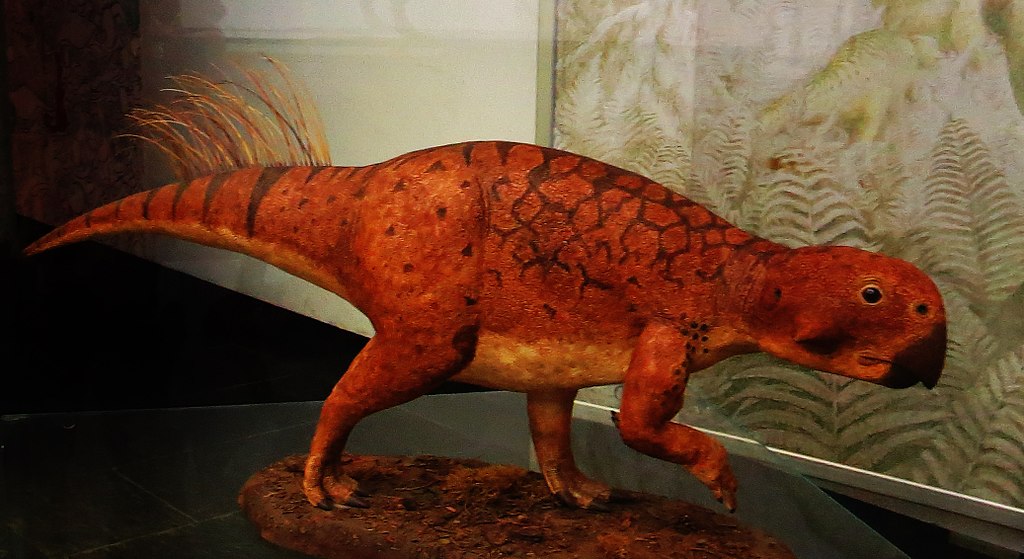
Paleontologists have identified several distinct types of filamentous structures in dinosaur fossils, representing different evolutionary stages or adaptations. The simplest form consisted of single filaments, similar to hair or bristles, as seen in the primitive feathers of Sinosauropteryx. More complex structures included tufted filaments with multiple strands emerging from a common base, similar to down feathers in modern birds. Some species displayed pennaceous feathers with a central shaft and barbs, approaching the structure of modern bird feathers. Particularly intriguing are the quill-like structures found in certain dinosaur species, including the stiff, hollow bristles along the tail of Psittacosaurus. These varied integumentary features likely served different functions depending on the species, body location, and evolutionary stage, ranging from insulation to display to potentially sensory roles. The diversity of these structures suggests they evolved multiple times or underwent significant diversification after appearing in dinosaur lineages.
Bristles and Quills in Non-Avian Dinosaurs
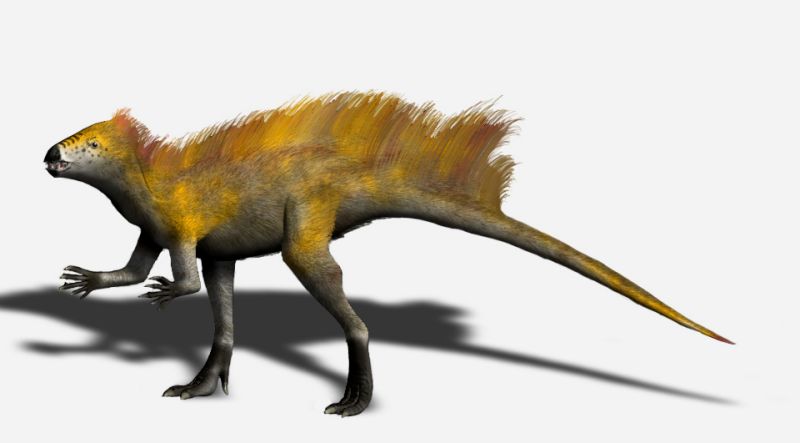
Among the most compelling evidence for bristle-like structures comes from certain ornithischian dinosaurs, evolutionarily distant from the theropod line that led to birds. The ceratopsian Psittacosaurus, a distant relative of Triceratops, preserved remarkable quill-like structures along its tail that extended up to 20 centimeters in length. These hollow, stiff bristles appear fundamentally different from feathers and more closely resemble the quills found on porcupines or the filamentous bristles on some modern reptiles. Similarly, Tianyulong, a heterodontosaurid dinosaur, displayed long, filamentous structures along its back and tail. These discoveries are particularly significant because they appear in dinosaur lineages separate from the theropod line that evolved into birds, suggesting that filamentous body coverings may have been an ancestral trait present in early dinosaurs or that similar structures evolved independently multiple times. These bristle-like structures likely served different functions than the proto-feathers found in theropods, possibly providing display capabilities or limited thermal regulation.
Whisker-Like Sensory Structures: Possibilities and Limitations
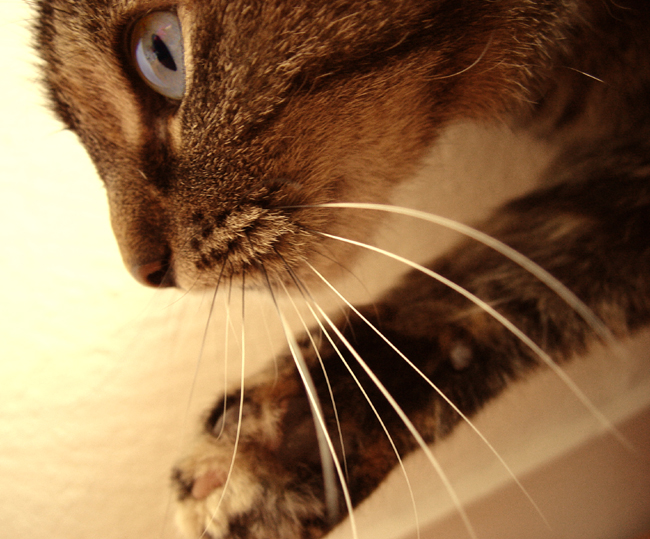
True whiskers, known scientifically as vibrissae, are specialized sensory organs found in mammals that function as highly sensitive tactile sensors. These structures are connected to extensive nerve supplies and allow animals to detect changes in their immediate environment. While no direct fossil evidence has been found for actual whiskers in dinosaurs, some researchers have speculated about the possibility of sensory filaments in certain species. The facial region of some small, nocturnal or burrowing theropods might have benefited from such sensory adaptations. However, whiskers represent a specialized mammalian adaptation, and any similar structures in dinosaurs would likely have developed independently and functioned differently. The facial tissue preservation needed to confirm such delicate structures is extremely rare in the fossil record, making definitive conclusions about dinosaur “whiskers” currently impossible. If dinosaurs did possess specialized sensory filaments, they would have evolved convergently with mammalian whiskers rather than representing homologous structures.
The Feathered Dinosaur Revolution

The discovery of feathered dinosaurs represents one of the most significant paradigm shifts in paleontology over the past few decades. Beginning with Sinosauropteryx in 1996, a cascade of fossil finds has revealed numerous feathered dinosaur species, primarily within theropod lineages. Yutyrannus, a 9-meter-long tyrannosaur relative discovered in 2012, demonstrated that even large predatory dinosaurs could be feathered, challenging the assumption that feathers were limited to small-bodied species. The diversity of feather types preserved in the fossil record shows a clear evolutionary progression from simple filaments to complex, asymmetrical flight feathers. Most significantly, these discoveries have firmly established the evolutionary connection between dinosaurs and birds, with modern birds now understood to be living theropod dinosaurs. The presence of feathers and filamentous structures has forced a complete reevaluation of dinosaur appearance, physiology, and behavior, demonstrating that many dinosaur species were far more bird-like than previously imagined.
Functions of Filamentous Structures in Dinosaurs

The varied filamentous structures found on different dinosaur species likely served multiple evolutionary functions, adapting to specific environmental and behavioral needs. Thermal regulation represents a primary potential function, with even simple filaments providing insulation that could help maintain body temperature—particularly important if some dinosaur species were moving toward endothermy (warm-bloodedness). Display features represent another likely function, with colorful or elaborate filaments potentially playing crucial roles in mate attraction, species recognition, or intimidation displays. Particularly in the case of quill-like structures on tails or along the back, these features might have made dinosaurs appear larger to potential predators or competitors. For smaller dinosaurs, camouflage could have been another benefit, with filaments breaking up the body outline or matching surrounding vegetation. Additionally, in some cases, sensory functions similar to but less specialized than mammalian whiskers might have provided environmental feedback, particularly for species navigating complex environments or with nocturnal habits.
The Psittacosaurus Tail Bristles: A Case Study
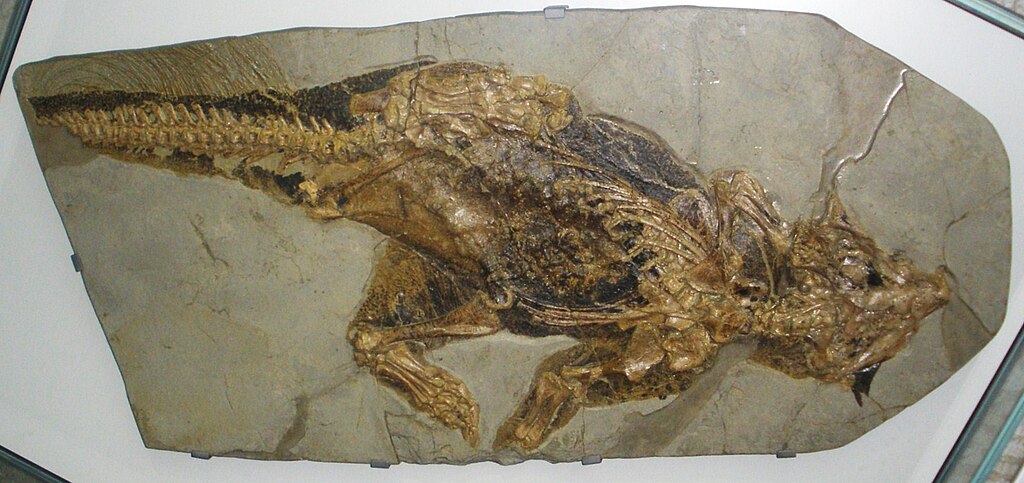
Perhaps the most compelling evidence for bristle-like structures in dinosaurs comes from a remarkably preserved specimen of Psittacosaurus from the Early Cretaceous of China. This specimen, housed at the Senckenberg Museum in Frankfurt, shows a series of stiff, hollow bristles extending from the upper surface of the tail. These structures, measuring up to 20 centimeters long, appear fundamentally different from the proto-feathers found in theropod dinosaurs. Analysis suggests they were hollow, stiff, and likely composed of keratin—the same protein found in horns, claws, and modern feathers. The arrangement of these bristles, forming a row along the tail, has led paleontologists to hypothesize they may have served display functions, possibly during courtship or as a visual signal to other members of the species. Alternatively, they might have provided limited defense by making the animal appear larger to potential predators. This remarkable fossil demonstrates that filamentous integumentary structures evolved independently in different dinosaur lineages, suggesting these features may have been more widespread than the fossil record currently indicates.
Modern Analogues: Birds, Reptiles, and Mammals

Looking at modern animals provides valuable insights into how dinosaur filaments might have functioned. Birds, as living dinosaurs, offer the most direct comparison, with feathers serving multiple functions including flight, insulation, waterproofing, display, and sensory purposes. Some reptiles also possess specialized scale-derived structures that might parallel certain dinosaur integumentary features—for example, the bristle-like modified scales on marine iguanas or the sensory spines on some geckos. In mammals, different specialized filaments serve varied functions: whiskers provide highly sensitive tactile feedback, while quills on porcupines and echidnas offer defensive protection. The convergent evolution of similar structures across different animal groups demonstrates how selective pressures can produce comparable adaptations in unrelated lineages. When examining dinosaur filaments, paleontologists must consider the full range of potential functions observed in modern analogues while recognizing that extinct dinosaurs might have utilized these structures in unique ways suited to their specific ecological niches and physiological requirements.
Reconstructing Dinosaur Appearance: Challenges and Advances
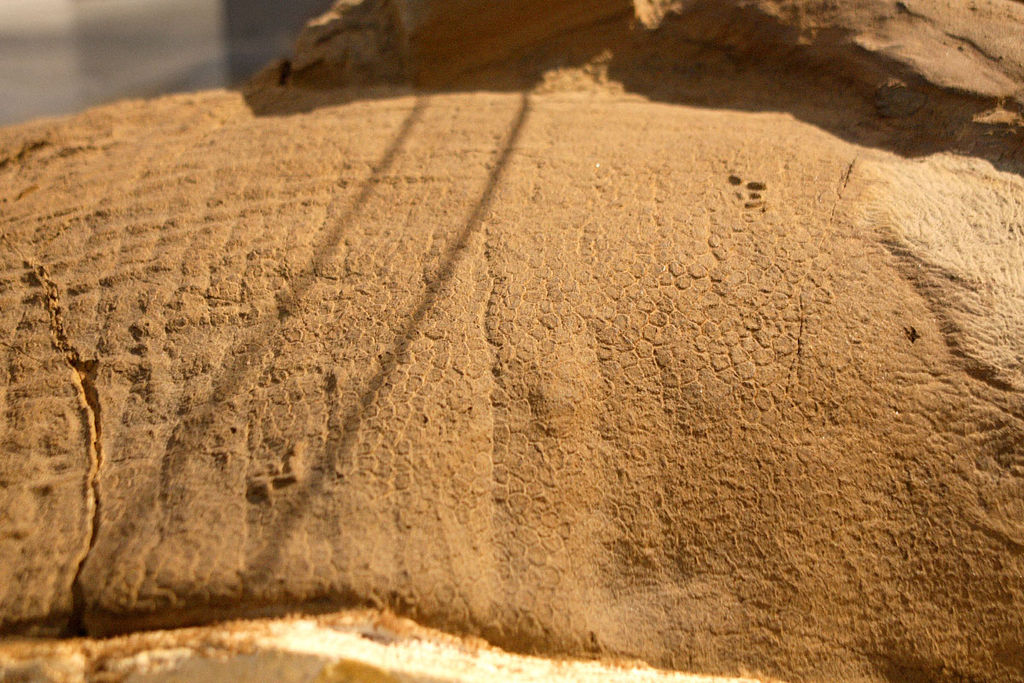
Creating scientifically accurate reconstructions of dinosaur appearance presents significant challenges, particularly regarding soft tissues that rarely fossilize. Paleontologists must work with limited direct evidence of integumentary structures, often preserved only in exceptional circumstances. When direct evidence is absent, scientists rely on phylogenetic bracketing—inferring traits based on those present in closely related species. This approach has become increasingly sophisticated as our understanding of dinosaur evolutionary relationships improves. Advanced imaging techniques now allow scientists to examine fossils at microscopic levels, revealing details of filament structure, arrangement, and sometimes even original coloration through preserved melanosomes (pigment-bearing structures). Computer modeling has also advanced the field, allowing scientists to test hypotheses about the function and appearance of different filamentous structures. Despite these advances, significant uncertainty remains about the exact appearance of many dinosaur species, with new fossil discoveries frequently prompting revisions to previous reconstructions. The dynamic nature of this field means that our visual understanding of dinosaurs continues to evolve as new evidence emerges.
The Debate: How Widespread Were Filamentous Structures?
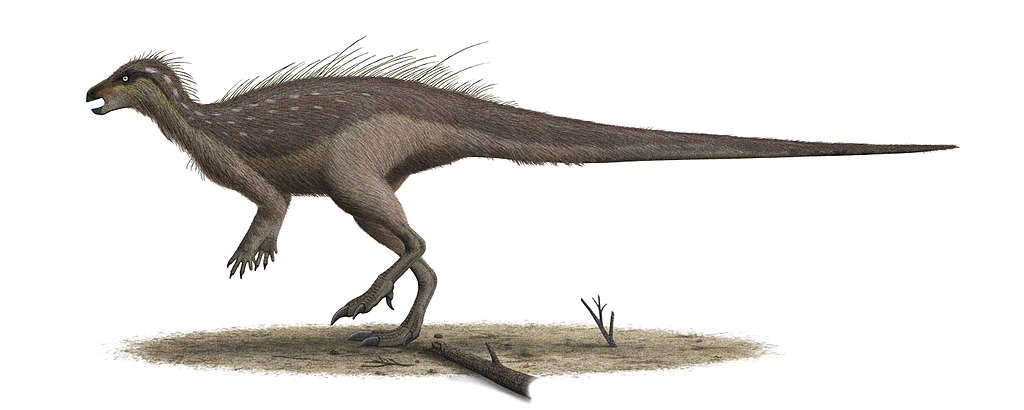
The extent to which filamentous structures were distributed across different dinosaur groups remains a subject of active scientific debate. The clearest evidence exists for theropod dinosaurs, particularly those closely related to birds, where feather-like structures are well-documented in numerous fossils. The presence of bristle-like structures in certain ornithischian dinosaurs like Psittacosaurus and Tianyulong suggests these features might have been more widespread, potentially representing an ancestral trait present in early dinosaurs. Some paleontologists propose that simple filamentous coverings could have been a basal feature of dinosaurs, later lost in some lineages (like large sauropods) or elaborated into feathers in others. However, this remains contentious, with other scientists arguing that the sparse evidence for filaments in ornithischians might represent independent evolutionary developments rather than ancestral traits. The absence of filamentous preservation in many well-preserved fossils, including some with exceptional skin impressions, suggests that if present, such features weren’t universal across all body regions or dinosaur groups. As research continues, the picture becomes increasingly nuanced, with evidence suggesting a complex evolutionary history of dinosaur integumentary structures.
Future Research Directions and Unanswered Questions
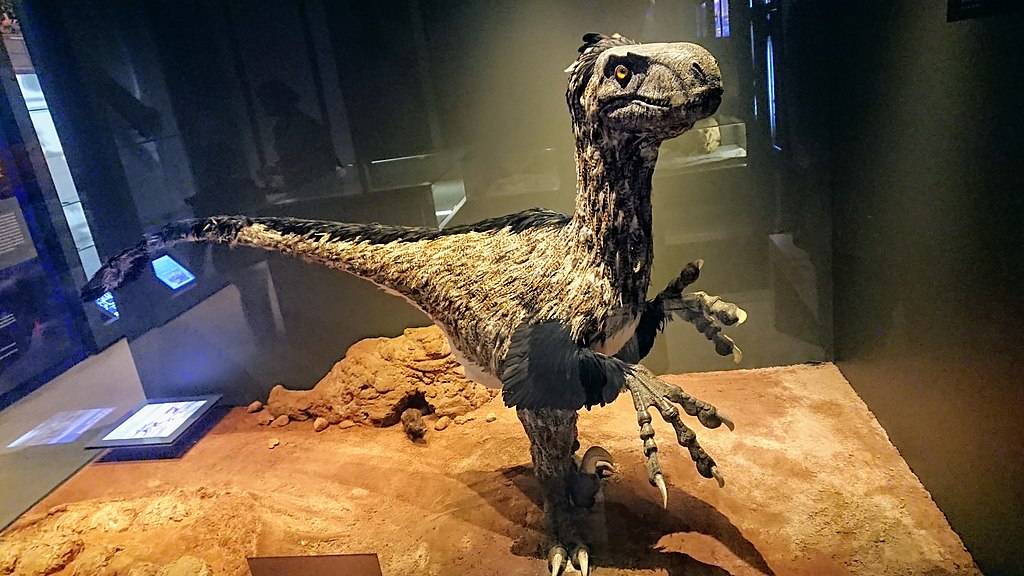
The study of dinosaur integumentary structures represents a dynamic field with numerous avenues for future research. New fossil discoveries, particularly those from formations with exceptional preservation conditions, continue to refine our understanding of dinosaur appearance. Advanced analytical techniques, including scanning electron microscopy, energy-dispersive X-ray spectroscopy, and synchrotron radiation analysis, offer increasingly detailed insights into the microstructure and composition of preserved filaments. One crucial area for future research involves determining whether filamentous structures in different dinosaur groups represent homologous features inherited from a common ancestor or convergent adaptations that evolved independently. Questions also remain about the developmental biology of these structures—how they grew, molted, and changed throughout an individual’s life cycle. Paleontologists are particularly interested in better understanding the transition from simple filaments to complex feathers and the genetic and developmental mechanisms that drove this evolution. As new fossils are discovered and analytical techniques advance, our understanding of dinosaur integumentary structures, including whisker-like, bristle-like, and quill-like features, will continue to develop and potentially reshape our image of these fascinating prehistoric creatures.
Conclusion: Reimagining the Dinosaurs
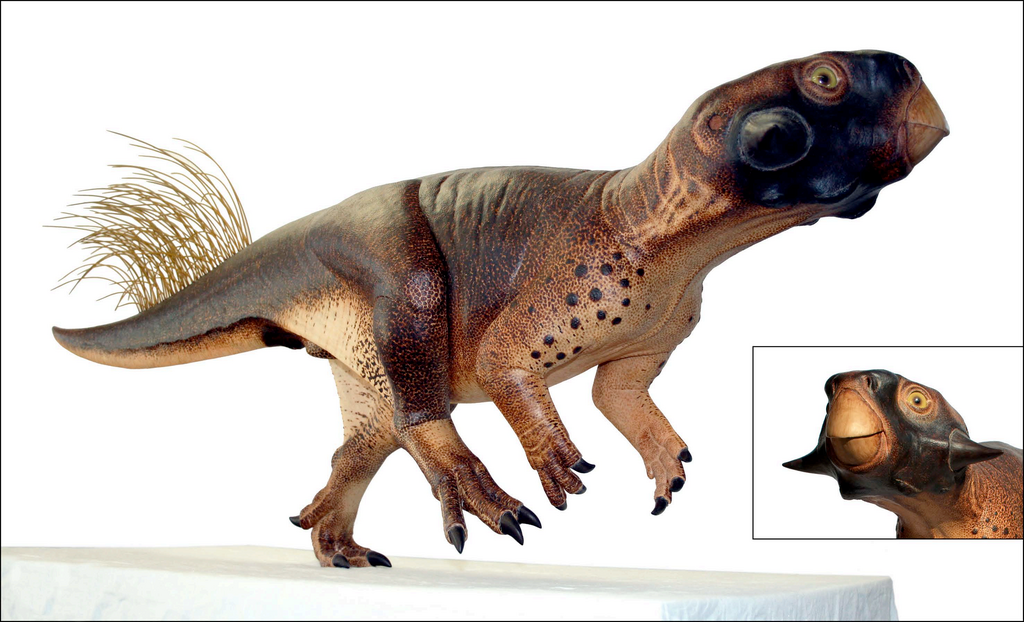
The evidence for filamentous structures in dinosaurs has fundamentally transformed our understanding of these iconic prehistoric animals. From the primitive feathers of Sinosauropteryx to the bristle-like tail quills of Psittacosaurus, these discoveries reveal dinosaurs as more diverse, complex, and potentially colorful than traditionally depicted. While true whiskers comparable to those of mammals likely didn’t exist in dinosaurs, various filamentous structures serving display, insulation, and possibly some sensory functions were present across different dinosaur lineages. These findings highlight the remarkable evolutionary experimentation that occurred throughout the 165-million-year reign of dinosaurs. As we continue to uncover new evidence and refine our analytical techniques, our vision of dinosaurs evolves—not as simplistic, scaly reptiles, but as dynamic, diverse creatures sporting a range of integumentary adaptations including feathers, bristles, and quill-like structures. This evolution in our scientific understanding reminds us that paleontology remains a vibrant field where new discoveries continually refine and sometimes revolutionize our perception of Earth’s remarkable prehistoric life.

